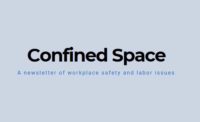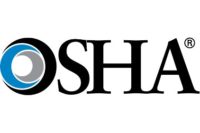The spring 2019 regulatory agenda released by OSHA last week includes rulemakings in various stages that will be priorities for the agency in the near future.
Included on the agenda:
Workplace Violence in Health Care: After having published an RFI in 2016 that solicited input on issues and prevention strategies to consider in developing a standard, OSHA now intends to initiate a Small Business Regulatory Enforcement Fairness Act (SBREFA) panel to address the issue of preventing workplace violence specifically in healthcare and social assistance industries. Congress, however, introduced a bill earlier this year that would fast-track the regulatory process by directing OSHA to adopt and implement a final rule without following the traditional rulemaking procedures. In Congressional hearings on the "Workplace Violence Prevention for Health Care and Social Service Workers Act," attorney Manesh K. Roth of the Washington, D.C.-based law firm, Keller and Heckman LLP, said; “There is no crisis that would justify casting aside the traditional rulemaking due process. A safety or health standard should be adopted only after gathering input from the affected stakeholder community as to the most effective way to proceed.”
Silica Standard for Construction: OSHA stated its intention to publish a Request for Information (RFI) by May 2019 soliciting comment on potential updates to Table 1 of the Silica Standard for the Construction Industry. Construction industry employers who comply with the engineering controls, work practices, and respiratory protection specified for the task in Table 1 are not required to perform exposure assessments or comply with the permissible exposure limit in the silica standard. OSHA is interested in gathering information from stakeholders on the effectiveness of control measures, tasks and tools that are not currently listed in Table 1 and will evaluate information to determine if revisions to Table 1 are appropriate.
Lock-Out/Tag-Out: On May 20, 2019, OSHA published in the Federal Register an RFI to solicit input on two areas where "modernizing" the Lock-Out/Tag-Out (LOTO) standard "might better promote worker safety without additional burdens to employers." First, OSHA seeks information about the safe use of control circuit type devices, which are currently excluded from OSHA's definition of energy-isolating device, to control of hazardous energy. OSHA also solicits information about controlling hazardous energy from the use of robotics technology in the workplace. Comments are due in response to the RFI by August 19, 2019.
Hazard Communication: OSHA stated its intention to publish its much-anticipated proposed rule to harmonize the Hazard Communication Standard (HCS) with the "latest edition" of the Globally Harmonized System of Classification and Labeling of Chemicals (GHS). OSHA intends to publish the proposed rule by December 2019. OSHA acknowledges that the GHS is a "living document and has been updated several times since OSHA's [March 2012] rulemaking." OSHA notes in the agenda that the HCS is currently based on Revision 3 of the GHS, while the United Nations has completed Revision 7. Revision 8 is due to be released this summer.
Emergency Response: OSHA stated its intention to initiate a SBREFA panel by May 2019 which will consider updates to OSHA's various emergency response and preparedness standards. The SBREFA panel will include several issues for a potential draft standard, including organization risk management, facility and equipment preparedness, standard operating procedures and incident management, and medical/fitness requirements.
OSHA also released an update of its "Long Term Actions" list, which, notably, includes its Process Safety Management (PSM) Standard and "Drug Testing Program and Safety Incentive Rules."
OSHA was directed by Executive Order 13650 to modernize the PSM standard following the West Fertilizer Company facility explosion in 2013. OSHA has already collected feedback on various proposals to revise the PSM Standard in response to the 2014 RFI and the 2016 SBREFA panel. OSHA indicates on the agenda that action on the PSM standard is "to be determined."
As for drug testing and safety incentive programs, OSHA expects to issue a proposed rule in September 2020 that would "memorialize" an October 2018 field memorandum clarifying OSHA's position on drug testing and safety incentive programs following the issuance of the "Improve Tracking of Workplace Injuries and Illnesses" rule.
To read the full agenda, visit the Office of Information and Regulatory Affairs (OIRA) website.








